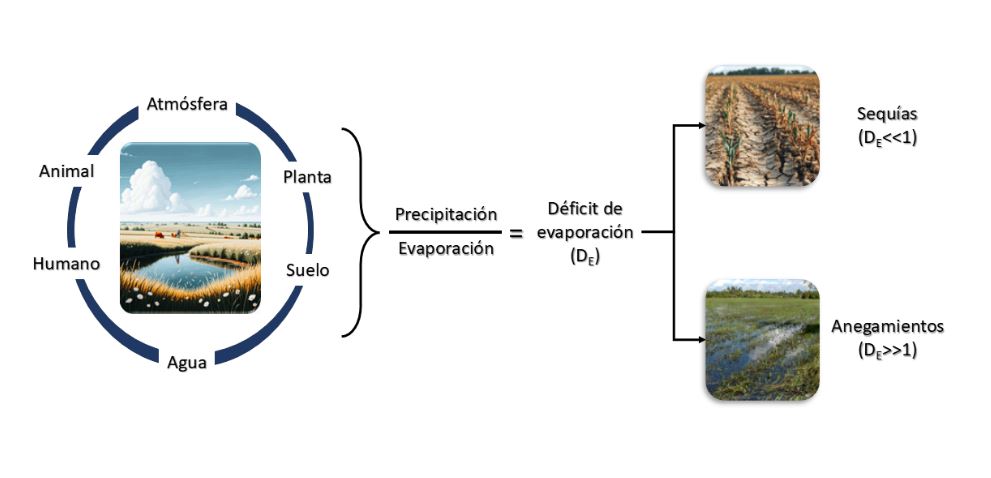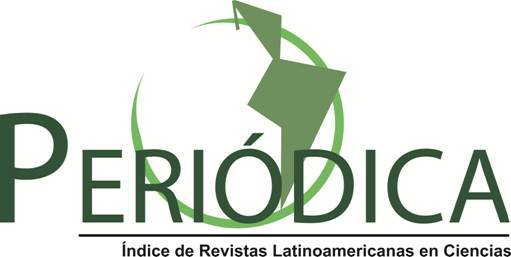Evaporation deficit as an indicator of water balance in Chiapas, Mexico
DOI:
https://doi.org/10.18633/biotecnia.v27.2459Keywords:
drought; water stress; climate assessment; evaporation; rainfallAbstract
This study introduces evaporation deficit (DE) as a novel indicator to assess water balance and climate vulnerability in the state of Chiapas, Mexico. Analyzing data from 188 meteorological stations, we examined spatial and temporal variations in DE. Results indicate that DE is a robust tool for identifying regions and periods prone to drought or excessive moisture. A high spatial variability in DE distribution was observed, attributed to the complexity of hydrometeorological processes in the region. To estimate monthly DE from annual DE, the state was subdivided into three zones (A: R²=0.94, RMSE=0.216; B: R²=0.96, RMSE=0.065; C: R²=0.88, RMSE=0.415). This study demonstrates that DE is a valuable indicator for assessing water balance in Chiapas, providing insights with implications for water resources management and agriculture. However, the study acknowledges limitations related to data quality and spatial scale. Future investigations might explore the potential of DE as a tool for agricultural decision-making.
Downloads
References
Alba-López, M.P., González-Espinosa, M., Ramírez-Marcial, N. y Castillo-Santiago, M.Á. 2003. Determining the distribution of Pinus ssp. in the Central Highlands of Chiapas, Mexico. Botanical Sciences. 73: 7-15. https://doi.org/10.17129/botsci.1675
Arellano-Monterrosas, J.L. y Ruiz-Meza, L.E. 2019. Variabilidad climática y eventos extremos en la cuenca del río Zanatenco, Chiapas. Tecnología y Ciencias del Agua. 10: 249-274. https://doi.org/10.24850/j-tyca-2019-03-10
Arreola Muñoz, A.V. 2019. Variabilidad y cambio climático regionalizado en Chiapas. Diversidad. 16: 44-54. https://www.idesmac.org/revistas/index.php/diversidad/article/view/66
Baiamonte, G. 2021. Simplified Interception/Evaporation Model. Hydrology. 8: 99. https://doi.org/10.3390/hydrology8030099
CONAGUA. Comisión Nacional del Agua. Información climatológica del estado de Chiapas. [Consultado 24 Abril 2024] 2024. Disponible en: https://smn.conagua.gob.mx/es/informacion-climatologica-por-estado?estado=chis.
David, J.S., Valente, F. y Gash, J.H. 2006. Evaporation of intercepted rainfall. En: Encyclopedia of Hydrological Sciences. M.G. Anderson (ed.), pp 627–634. John Wiley, Chichester, U. K., https://doi.org/10.1002/0470848944.hsa046
Derardja, B., Khadra, R., Abdelmoneim, A.A.A., El-Shirbeny, M.A., Valsamidis, T., De Pasquale, V., Deflorio, A.M. y Volden, E. 2024. Advancements in remote sensing for evapotranspiration estimation: a comprehensive review of temperature-based models. Remote Sensing. 16:1927. https://doi.org/10.3390/rs16111927
Díaz Hernández, B.M., Plascencia Vargas, H., Arteaga Ramírez, R. y Vázquez Peña, M.A. 2000. Estudio y zonificación agroclimáticos en la región Los Altos de Chiapas, México. Investigaciones geográficas. 42: 7-27. http://www.scielo.org.mx/scielo.php?script=sci_arttext&pid=S0188-46112000000200002& lng=es&tlng=es
Esquivel-Román, A., Callejas-Chavero, A. y Villegas-Guzmán, G.A. 2018. Relación de la temporalidad (estiaje y lluvias) con la riqueza y abundancia de arañas saltarinas (Araneae: Salticidae) en cinco localidades de San Luis Potosí. Acarología y Aracnología. 2: 448-475.
Evett, S.R., Schwartz, R.C., Casanova, J.J. y Heng, L.K. 2012. Soil water sensing for water balance, ET and WUE. Agricultural Water Management, 104:1-9. https://doi.org/10.1016/j.agwat.2011.12.002
Geen, R., Pietschnig, M., Agrawal, S., Dey, D., Lambert, H. y Vallis, G.K. 2023. The relationship between model biases in East Asian summer monsoon rainfall and land evaporation. Advances in Atmospheric Sciences. 1-14. https://doi.org/10.1007/s00376-023-2297-1
Hidalgo-Sánchez, M., Ángeles-Pérez, G., Yépez, E.A., Plascencia-Escalante, F.O., Delgado-Balbuena, J. y González-Martínez, T.M. 2021. Evapotranspiración e intercambio de energía en un bosque templado de México. Tecnología y Ciencias del Agua. 12: 490-537. https://doi.org/10.24850/j-tyca-2021-02-11
INEGI. Instituto Nacional de Estadística y Geografía. Conjunto de datos vectoriales fisiográficos. Continuo Nacional serie I. Subprovincias fisiográficas. [Consultado 18 Mayo 2024] 2001. Disponible en: https://www.inegi.org.mx/temas/fisiografia/#Descargas.
QGIS Development Team. 2023. QGIS Geographic Information System version 3.28.7 https://qgis.org/es/site/
Li, Q., Wang, Y. y Duan, Y. 2015. Impacts of evaporation of rainwater on tropical cyclone structure and intensity-A revisit. Journal of the Atmospheric Sciences. 72: 1323-1345, https://doi.org/10.1175/JAS-D-14-0224.1
López-López, C., Exebio-García, A.A., Flores-Velázquez, J. y Juárez Márquez, A.E. 2023. Índice de estrés hídrico (IEH) e índice de servicio del riego (ISR) en función de la huella hídrica de los cultivos en los módulos de riego en México. Ciencia Latina Revista Científica Multidisciplinar. 7: 11303-11331. https://doi.org/10.37811/cl_rcm.v7i2.6214
Mundo-Molina, M.D. 2019. Discusión a la nota técnica “Índices de cambio climático en la cuenca del Río Grande, Chiapas, México” de Figueroa-Gallegos, J.A. 2017. 8: 137-143. Tecnología y Ciencias del Agua. 10: 283-292. https://doi.org/10.24850/j-tyca-2019-06-d1
Mundo-Molina, M.D., Godínez-Gutiérrez, E., Pérez-Díaz, J. y Hernández-Cruz, D. 2021. Detecting climate change in using extreme data from two surface weather stations: Case study Valle of Comitán and La Esperanza, Chiapas, México. Journal of Water Resource and Protection. 13: 1061-1075. https://doi.org/10.4236/jwarp.2021.1312057
R Core Team. 2020. R: A language and environment for statistical computing. R Foundation for Statistical Computing, Vienna, Austria. URL https://www.R-project.org/
Ruiz-Ortega, F.J., Clemente, E., Martínez-Rebollar, A. y Flores-Prieto, J.J. 2024. An evolutionary parsimonious approach to estimate daily reference evapotranspiration. Scientific Reports. 14(1):6736. https://doi.org/10.1038/s41598-024-56770-3Sekizawa, S., Miyasaka, T., Nakamura, H., Shimpo, A., Takemura, K. y Maeda, S. 2019. Anomalous moisture transport and oceanic evaporation during a torrential rainfall event over western Japan in early July 2018. SOLA 15A. 25-30. https://doi.org/10.2151/sola.15A-005
Sharmila, S. y Hendon, H.H. 2020. Mechanisms of multiyear variations of Northern Australia wet-season rainfall. Scientific Reports. 10 :5086. https://doi.org/10.1038/s41598-020-61482-5
Villalobos-Cano, O., Santellano-Estrada, E., Stringam, B.L., Grover, K. y Esparza-Vela, E. 2024. Estimating water use efficiency for major crops in Chihuahua, Mexico: crop yield function models vs. evapotranspiration. Sustainability. 16:1851. https://doi.org/ 10.3390/su16051851
Wanniarachchi, S. y Sarukkalige, R.A. 2022. A review on evapotranspiration estimation in agricultural water management: Past, Present, and Future. Hydrology. 9(7), 123. https://doi.org/ 10.3390/hydrology9070123

Downloads
Published
How to Cite
Issue
Section
License
Copyright (c) 2025

This work is licensed under a Creative Commons Attribution-NonCommercial-ShareAlike 4.0 International License.
The journal Biotecnia is licensed under the Attribution-NonCommercial-ShareAlike 4.0 International (CC BY-NC-SA 4.0) license.




_(1)_(1).png)






_(2).jpg)





